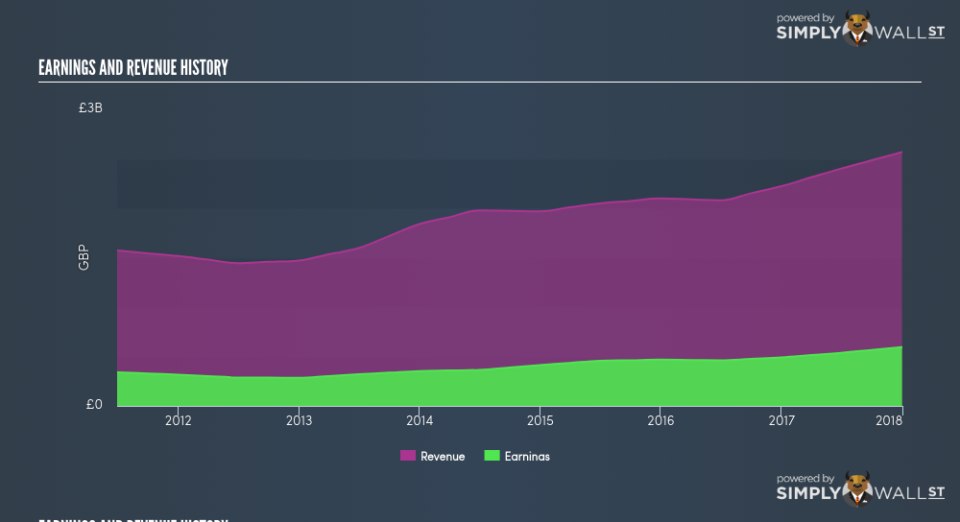Does Schroders plc’s (LON:SDR) Past Performance Indicate A Stronger Future?

When Schroders plc (LON:SDR) announced its most recent earnings (31 December 2017), I compared it against two factor: its historical earnings track record, and the performance of its industry peers on average. Being able to interpret how well Schroders has done so far requires weighing its performance against a benchmark, rather than looking at a standalone number at a point in time. In this article, I’ve summarized the key takeaways on how I see SDR has performed. Check out our latest analysis for Schroders
How Well Did SDR Perform?
SDR’s trailing twelve-month earnings (from 31 December 2017) of UK£594.40m has jumped 21.26% compared to the previous year. Furthermore, this one-year growth rate has exceeded its 5-year annual growth average of 10.91%, indicating the rate at which SDR is growing has accelerated. What’s the driver of this growth? Well, let’s take a look at whether it is only a result of industry tailwinds, or if Schroders has seen some company-specific growth.
In the last few years, Schroders grew its bottom line faster than revenue by successfully controlling its costs. This resulted in a margin expansion and profitability over time. Viewing growth from a sector-level, the UK capital markets industry has been growing its average earnings by double-digit 30.04% in the previous year, and 18.68% over the past half a decade. This shows that any uplift the industry is deriving benefit from, Schroders has not been able to leverage it as much as its average peer.
In terms of returns from investment, Schroders has not invested its equity funds well, leading to a 17.13% return on equity (ROE), below the sensible minimum of 20%. Furthermore, its return on assets (ROA) of 2.64% is below the GB Capital Markets industry of 8.36%, indicating Schroders’s are utilized less efficiently. However, its return on capital (ROC), which also accounts for Schroders’s debt level, has increased over the past 3 years from 3.28% to 4.34%.
What does this mean?
Schroders’s track record can be a valuable insight into its earnings performance, but it certainly doesn’t tell the whole story. Companies that have performed well in the past, such as Schroders gives investors conviction. However, the next step would be to assess whether the future looks as optimistic. You should continue to research Schroders to get a better picture of the stock by looking at:
Future Outlook: What are well-informed industry analysts predicting for SDR’s future growth? Take a look at our free research report of analyst consensus for SDR’s outlook.
Financial Health: Is SDR’s operations financially sustainable? Balance sheets can be hard to analyze, which is why we’ve done it for you. Check out our financial health checks here.
Other High-Performing Stocks: Are there other stocks that provide better prospects with proven track records? Explore our free list of these great stocks here.
NB: Figures in this article are calculated using data from the trailing twelve months from 31 December 2017. This may not be consistent with full year annual report figures.
To help readers see pass the short term volatility of the financial market, we aim to bring you a long-term focused research analysis purely driven by fundamental data. Note that our analysis does not factor in the latest price sensitive company announcements.
The author is an independent contributor and at the time of publication had no position in the stocks mentioned.

 Yahoo Finance
Yahoo Finance 
